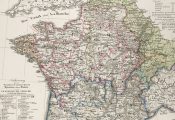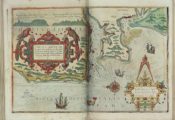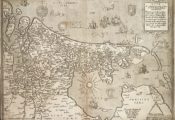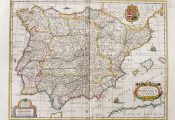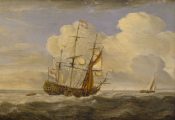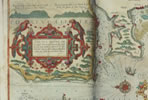More than that, it was at the centre of an intellectual ferment, in part prompted by discoveries in the wider world.
Spain’s status and treasury were both hugely augmented by the riches that flowed from its new imperial possessions. It had expanded its control over important areas in Europe itself, but its greatest prizes lay beyond the seas. And these came within its grasp due to the enterprise and daring of its merchant adventurers in exploring the limits of the known world. A string of maritime ventures were to yield claims to a new empire scattered round the globe, in the Pacific and Asia but, above all, in the Americas.
Wealth beyond their wildest dreams
The Spanish Crown encouraged such ventures, hoping to add land and resources to the country’s existing wealth. And what the Spanish explorers found in Central and South America was beyond their wildest dreams. The fall of the Aztec, Maya and Inca empires the hands of Spanish forces (and foreign diseases) opened the way for Spanish encounters with the riches of the region.
Silver from mines in South and Central America quickly came to form a substantial part of the Spanish treasury’s income and was also used to pave the way for trade in Asia. It was as if all this became the lubricant of even greater commercial growth. Not surprisingly, by 1600 Spain was Europe’s wealthiest country.
Seeds and treasure
Yet there was more to imperial Spain’s empire than the amassing of conventional riches. Spain pioneered those exchanges of the commodities of empire that were later to characterise the actions of all major European powers. Crops such as potatoes, coca, tomatoes, peanuts, corn and pineapples, seeds, plants, and bulbs were all gradually shifted across the Atlantic back to Spain for consumption and trade to Europe. Christopher Columbus, for example, on only his second voyage, took sugar cane from Madeira to the Caribbean. The consequences were enormous. The introduction of forced African labour in places like Hispaniola would make the production of sugar cane an incredibly profitable enterprise.
Spain, however, was also dazzled by the obvious riches of the Americas and Asia. Treasure from the Philippines, for instance, was transported across the Pacific, hauled over the Isthmus of Panama, and then transferred to ships heading back to Spain. After 1560, Spanish treasure fleets, filled with the wealth of the Americas and Asia, sailed in convoy through the Caribbean and rendezvoused in Havana for the onward voyage to Spain. They proved irresistible to European privateers, led by the French and British, and spawned the infamous age of piracy in the region, the Caribbean islands affording privateers ample hiding places to prey on Spanish seaborne wealth.
Leaving the slave trade to others
The large amount of silver taken by the Spanish led to the destruction of their economy as the precious metal became devalued. Thus the emphasis on treasure was soon replaced by a trade that Spain mostly left to others. The flow of precious metals east across the Atlantic was displaced by the flow of African humanity heading westwards, destined for the plantations of the Americas. Spain was happy to leave that trade in the hands of the Portuguese and the Dutch whilst benefiting from the forced slave labour.
When Spain required African slaves, it offered licences (asientos) to other trading nations to supply its needs. Spain colonised and exploited its new-found land, but its transatlantic supply of Africans was provided by others. This meant that Europe’s greatest power was not to become Europe’s major slave-trading nation.
